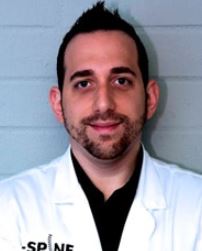“Can chiropractors pop your back if you have surgery with rods?”
I want to know can chiropractors pop your back if you have surgery with rods?
13 Answers
ChiropractorChiropractor
We typically do not adjust areas where the rods are, because those joints won't move. The hardware in the spine was put there for the specific agenda of fixating the joints together and preventing motion. That being said, we CAN adjust the adjacent joints that are around the rods. I also want to note that the pop sound you hear with an adjustment is just incidental. You can have a really great, precise adjustment that provides relief, reduces inflammation, and positively influences neurology without a sound.. just like you can hear a pop without those positive changes. For me, it's more about the specificity, quality of movement, and post assessment that are most important =)
Short answer: If you want your midback "popped" and you have Herrington rods, going the length of you thoracic spine, the answer is no.
long answer: "popping" your back with surgical hardware MAY be possible; however, it is dependant upon what specific hardware you have and where it is. Some areas that are fused will move together as one unit or a chiropractor may foregoe adjusting the area that has hardware. I usually work around fusions and it is perfectly safe as long as the doc knows where everything is at and what is there exactly. It can be extremely beneficial for patients to have their atlas adjusted even if the rest of the cervical spine is fused.
long answer: "popping" your back with surgical hardware MAY be possible; however, it is dependant upon what specific hardware you have and where it is. Some areas that are fused will move together as one unit or a chiropractor may foregoe adjusting the area that has hardware. I usually work around fusions and it is perfectly safe as long as the doc knows where everything is at and what is there exactly. It can be extremely beneficial for patients to have their atlas adjusted even if the rest of the cervical spine is fused.
It's important to consult with your medical doctor and/or your chiropractor about any medical conditions, surgeries, or implants you have before seeking chiropractic care. In general, chiropractors can work with patients who have had surgery and/or have metal implants such as rods or screws, but they will need to take certain precautions to ensure your safety and to avoid damaging any implanted devices.
Chiropractors may need to avoid certain areas or adjust their techniques to accommodate the presence of metal implants. They may also need to modify the amount of pressure or force they use during spinal adjustments.
In some cases, your medical doctor may recommend against chiropractic care if you have had spinal surgery with metal implants, particularly if the surgery was recent or if there are concerns about the stability of the implants.
Ultimately, it's important to communicate openly with both your chiropractor and your medical doctor about any medical conditions or concerns you have, and to work with both providers to create a treatment plan that is safe and effective for you.
Chiropractors may need to avoid certain areas or adjust their techniques to accommodate the presence of metal implants. They may also need to modify the amount of pressure or force they use during spinal adjustments.
In some cases, your medical doctor may recommend against chiropractic care if you have had spinal surgery with metal implants, particularly if the surgery was recent or if there are concerns about the stability of the implants.
Ultimately, it's important to communicate openly with both your chiropractor and your medical doctor about any medical conditions or concerns you have, and to work with both providers to create a treatment plan that is safe and effective for you.
IT is a misnomer to "Pop" a back. I have helped many people with rods in their back feel better, live longer, be stronger and limit their time in the hospitals.
If you have rods I would not recommend a chiropractic manipulation in that area that is supported by the rods. In areas that no rods are inputted, the doctor would have to examine and possibly take xrays to make sure that it is safe to do so. There are other ways to get relief if needed if you are not a candidate for manipulation. There is ART therapy, Physical therapy, Aqua Therapy, and Massage Therapy. I hope you are able to find a treatment that benefits you.
The correct answer is, "that depends". Above and below the rods may tolerate (gentle) manipulation/adjustments, but in the area of fusion/rod placement, you would likely keep it to something like muscle/fascia, (aka, soft-tissue) work, or other therapies.
Depends where rods are and yes still can adjust above and below rods. the vertebrae with rods are going to move. Use ice to help with inflammation, will reduce pain.
I have help many patients with surgical appliances including rods in their spines. I work in the soft tissue to relieve tension and stress. I don't like the term "Pop" in relationship to Chiropractic treatment. We do manual manipulation which is a very specific procedure and there may or may not be a sound or feeling associated with the treatment. Never let anybody "Pop" any joint unless they are well train as the will "pop" the wrong one. Hyper mobile joints give off the sound and feeling and my even give temporary relief when Popped however this is do to the endorphins the body releases. However, that will make the problem worse.








